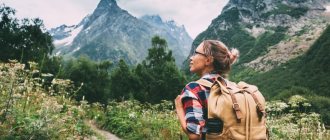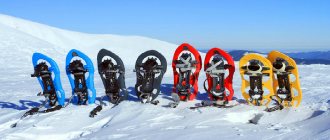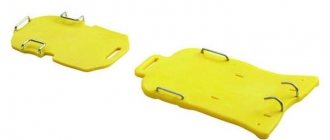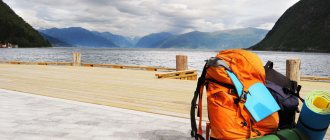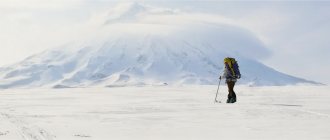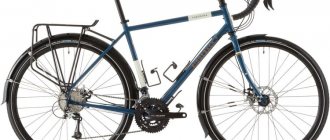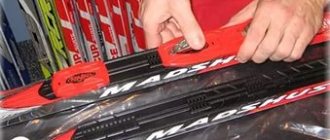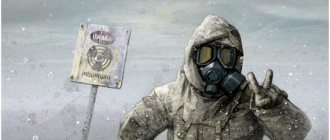A trip out of town for the weekend, a multi-day hike or a complex expedition to the mountains - wherever you are going, you need to think about organizing an overnight stay. A sleeping bag keeps you warm while you sleep, and not just the quality of rest and recuperation during the night, but also your health may depend on the correct choice. Let's figure out how not to get confused in the variety of sleeping bag models.
To choose a suitable sleeping bag, first clearly answer the questions what requirements the model must meet and in what conditions it will be used. What time of year are you going on a trip, for how long, what weather conditions await you, will it be hiking, water rafting or mountaineering, how sensitive are you to low temperatures, etc.
Ultimately, choosing a sleeping bag is a trade-off between insulating properties, weight and compactness when folded (it's no fun lugging around extra pounds on a multi-day hike or while climbing), and cost.
Types of sleeping bags
In general, sleeping bags can be divided into camping, hiking and expedition.
Camping sleeping bags
Camping does not imply that you will carry the equipment on yourself; at most, you will carry it from the trunk of the car to the camp site. Camping sleeping bags are the most comfortable and convenient, but have the largest volume and weight. In such a sleeping bag you will feel literally at home.
Travel sleeping bags
For example, a sleeping bag for a multi-day hike. In this case, you carry all your equipment on yourself, in a backpack over your shoulders. Tourist sleeping bags, at the same temperature, will have less weight and volume than camping ones. Their job is to allow you to get a good night's sleep and regain your strength for the next day of walking.
Expedition sleeping bags
Expedition sleeping bags are designed for use in harsh conditions: cold, snow, wind. For example, on a winter hiking trip, on a high-altitude climb.
Seasons of use
Depending on the time of year, sleeping bags are divided into:
- winter;
- summer;
- off-season.
Winter
Most often, a winter sleeping bag is filled with bird down or three-layer artificial fillers are made. Such bags have a large volume and high weight, but they can withstand temperatures down to -45 degrees Celsius. Sleeping bags with down filling require special care; it must be fluffed and dried well, otherwise the down will form clumps and the bag will lose its characteristics.
Summer
In summer sleeping bags, one or two layers of filler are used, depending on its thermal conductivity properties. The comfort temperature in such sleeping bags starts from +5 degrees and has the form of a blanket or mixed.
Off-season
The question of how to choose a sleeping bag for the off-season does not arise for many travelers, since at this time of year the weather is not pleasant, it is either slushy and cool outside, or dirty and frosty. Only a few companies are engaged in the production of such sleeping bags, so the choice is made based on the extreme temperatures for which these bags are designed. As a rule, they range from -15 to 0 degrees. Depending on the lower temperature level for which they are intended, a sleeping bag can consist of two or three layers of insulation. Off-season sleeping bags are easy to use in all seasons, their comfort temperature is +5 degrees.
Sleeping bag shape
According to their design, sleeping bags are divided into blankets and cocoons.
Sleeping bag-blanket
Rectangular sleeping bag. The long zipper can be unzipped and you get a full-fledged blanket. May have a hood-headrest. Some models can be interconnected. Basically, such sleeping blankets are used for camping and hiking, when the weight of equipment is not of fundamental importance. Due to their shape and cut, they are very comfortable for sleeping. Also suitable for larger people.
Sleeping bag-cocoon
The cocoon sleeping bag has an anatomical shape. It is equipped with a hood and is often supplied with a voluminous collar for increased thermal insulation. Due to the anatomical cut, the weight of the sleeping bag is reduced, and the fit to the body ensures better heat retention.
Manufacturers provide the possibility of fastening sleeping bags. If desired, you can zip together models from different brands, but you should make allowances for the fact that the zipper on cocoons often does not reach the end of the sleeping bag, and the final design will have a forked tail.
For ease of fastening (and this is a significant contribution to the thermal insulation properties of a sleeping bag - two people are much warmer), manufacturers produce models of sleeping bags in variations with a zipper on the left (L) or on the right side (R). If you plan to zip together sleeping bags, consider buying two identical models with different zippers.
Choosing a sleeping bag for an autumn or spring hike
Suitable for camping in a tent or outdoors. A lightweight, versatile sleeping bag that is practical to use and care for. The compact size when packed makes it easy to transport.
When choosing a sleeping bag, consider:
• Extreme temperature from 0°C to -15°C. Comfort temperature from +5°C to -5°C.
• The length of the sleeping bag should exceed your height by 25-30 cm, ensuring a comfortable condition when placed in clothes.
• “Cocoon” or a mixed cocoon-blanket model with a hood or headrest, with an insulated zipper. The mixed model can be used as a large blanket.
• Two or three layers of synthetic insulation. Does not absorb moisture, dries quickly, does not thicken during use, does not cause allergies, and is not susceptible to fungus.
Models with holofiber are lighter, more compact and more durable than those with padding polyester.
• Outer fabric is polyester. Synthetic fabric with waterproof coating. Inner shell made of synthetic or natural cotton fabric. Synthetic fabrics are light, durable, and pleasant to the touch. Dries quickly. Cotton fabric is hygroscopic and does not heat up in the cold.
• The ability to combine two identical models allows you to warm up faster and avoid heat loss.
• Select weight and volume for ease of transportation on a hike.
• Using a rug will reduce heat loss.
• The presence of a compression cover allows you to reduce the overall dimensions of a rolled sleeping bag.
Temperature range of the sleeping bag
EN13537 standard
Most sleeping bags undergo a laboratory temperature test in accordance with the European standard EN13537 , adopted by the European Committee for Standardization (CEN). The first such standard was released in 2002 (EN 13537:2002), then updated in 2012 (EN 13537:2012), and the latest updates were released in 2021 as part of the ISO 23537-1:2016 standard (International Organization for Standardization, ISO ; International Organization for Standardization). In addition, another project is currently in development.
The standard is called “Requirements for sleeping bags” and indicates the procedure for conducting temperature tests and the rules for applying markings for sleeping bags intended for sports and outdoor activities for adults. The standard does not apply to products intended for specific purposes, such as sleeping bags for the military or sleeping bags for expeditions in extreme climatic zones, as well as sleeping bags for children and infants. The maximum temperature is -20°C.
On the one hand, thanks to the standard, sleeping bags from different brands can be compared with each other. On the other hand, testing and marking sleeping bags in accordance with EN13537 is not a mandatory procedure, and the manufacturer retains the right to specify the temperature rating in accordance with its own criteria based on its own tests. In addition, the studies on which the standard is based were mostly conducted on trained people, while many individual factors influence how much heat our bodies lose, such as gender, size, age, experience and physical fitness.
The EN13537 standard provides four temperature indicators:
- Temperature maximum or Upper comfort limit T Maximum
- Comfort temperature T Comfort
- Temperature limit or Lower comfort limit T Limit
- Extreme temperature T Extreme
The first indicator can be specified optionally, the other three must be present. Each of the four temperature indicators corresponds to either an “average” man (age 25 years, height 173 cm, weight 73 kg) or an “average” woman (25 years, 160 cm, 60 kg).
T Maximum . The maximum ambient temperature at which an “average” man can sleep in an unzipped sleeping bag all night without experiencing discomfort from the feeling of excess heat and increased sweating.
T Comfort . The minimum ambient temperature at which the “average” woman can sleep continuously in a sleeping bag all night in a relaxed position, with the most possible comfort.
T Limit . The minimum ambient temperature at which the “average” man can sleep continuously in a sleeping bag all night in a position that helps retain heat, with the most possible comfort.
T Extreme . The minimum ambient temperature at which the “average” woman can survive in a sleeping bag for six hours without risk of death from hypothermia.
When choosing a sleeping bag, focus on the range between the comfort temperature and the lower limit of comfort and take into account your individual physiological characteristics. For girls, people of thin build and those who tend to get cold quickly, it is better to rely on a comfortable temperature. Only experienced climbers and tourists who have sufficient experience behind them can focus on extreme temperatures when choosing a sleeping bag.
Don’t forget that a travel mat will add warmth to your sleeping bag (especially if you use two at once: a mat and an inflatable/self-inflating one), thermal underwear or insulated clothing and fastening the sleeping bags. In case of cold, it is better to place outer clothing under you or throw it on top of your sleeping bag.
A sleeping bag that has passed the appropriate laboratory test will bear the EN13537 mark or the EN logo, confirming that the sleeping bag has passed the temperature test and meets EN textile standards. You can also find other marking options on the sleeping bag label:
- "Temperature tested to EN13537" means that the sleeping bag has passed the temperature test according to EN13537, but its materials do not necessarily meet European textile standards.
- “Temperature rating in accordance with EN13537” means that the manufacturer has tested and calculated temperature indicators independently, in accordance with EN13537.
If a sleeping bag's label or website description lists only one temperature setting, it should be considered the lower comfort limit temperature.
Insulation used in sleeping bags
Modern sleeping bags can be filled with natural down or synthetic filling.
Thanks to the rapid development of technological materials, synthetics have come close in their properties to high-quality goose down, but still cannot catch up with the best quality down in terms of thermal insulation properties, plus, as a rule, it has greater weight and volume when packaged. However, most synthetics have an important advantage - they retain their thermal insulation properties (continue to warm) even when wet and dry faster than down.
Pooh
Lightweight filler with excellent thermal insulation and compression properties (warms well, compresses compactly), but the disadvantage is the fear of moisture. Although modern manufacturers are increasingly using hydrophobic down, treated with special impregnations and having moisture-repellent properties. These can be found, for example, from Montbell and Brooks-Range. In addition, sleeping bags may use a moisture-resistant outer fabric or membrane that will protect the down from getting wet.
High-quality down will cost more than synthetics. The main indicator of down quality is determined using the Fill Power indicator. This is the ability of insulation to expand after loading. For example, a sleeping bag was in a compression bag in a backpack while traveling along the route, and in the evening you took it out for an overnight stay. The higher the Fill Power indicator, the more efficiently the fluff opens and fills the volume and the higher quality it is considered. As a rule, equipment uses down with an FP value of at least 550, and the highest values reach 800-900 and even 1000 units and are used in top models.
The photo below shows what structure fluff has with different FP values and how the same amount of fluff (85 grams) with different FP values takes up different volumes in a measuring cup.
Photo: www.montbell.us
Due to thermal insulation, low weight and good compressibility, down sleeping bags are preferable for winter and high-altitude ascents, as well as hikes and expeditions at the lowest temperatures.
Synthetic fillers
Unlike down, modern high-tech synthetics do not lose their thermal insulation properties even when wet, they dry faster and in most cases are cheaper, but, as a rule, they weigh more, take up more volume when packed and cake faster. Weight and compression properties depend on the specific type of synthetics. The most common insulation materials found in sleeping bags from leading manufacturers: Thihsulate, Thermolite, Primaloft, Heatseeker and Climashield.
Synthetics can be preferred if you are choosing a three-season sleeping bag, planning a trip to a region with high humidity or a hike with possible temperature changes.
Personal experience
The best answer to the question: “Which and how to choose a sleeping bag for a hike?” - this is to be convinced by your own experience. Of course, the criteria described above provide a basic guide to choosing a sleeping bag, but there is no substitute for real life experience.
TerraIncognitaPharaon 400
Sleeping bag TerraIncognitaPharaon 400
Excellent for sub-zero temperatures of -10°; -15°, especially if there is a “live heating pad” nearby. One of the most budget-friendly and simplest options that have already proven their reliability. Convenient and functional, but nothing special. The downside is that the zippers wore out very quickly, which was a big nuisance later. Now this model has a new copy - Siesta.
PinguinComfort
Sleeping bag PinguinComfort
The limit for comfortable use is -7°. This model, unlike the previous one, has excellent zippers and fasteners that have served for a long time. When it gets colder, you can climb into the sleeping bag with your clothes on (any model is spacious, this can even be called a key feature). Of course, this is not entirely the right option, but in extreme conditions, survival always comes before any comfort.
PinguinSpirit
Sleeping bag PinguinSpirit
The next variation of the same model. The hood has been improved, the filling has been changed to a more innovative one, and the thickness has been slightly increased. The comfort temperature limit has been raised to -12°. We still use this sleeping bag; after 3 years of constant use it has not deformed at all and has not lost any properties.
DeuterDreamLite 250
Sleeping bag DeuterDreamLite 250
Summer sleeping bag for more gentle conditions. Weighs just over a kilogram, the comfort temperature limit is +5°. Versatile to use, durable. Not a bad option for going to the mountains. It’s cool when spending the night near lakes, but in the valleys the best option for this sleeping bag.
Accessories for a sleeping bag
As a rule, a sleeping bag is sold complete with a compression bag, which minimizes the volume of the sleeping bag and is intended for its transportation, or a storage bag in which the sleeping bag will lie at home not in a compressed, but in a fluffed form. When hiking, it is better to place a sleeping bag in a compression bag at the bottom of a backpack. Some people prefer to carry a sleeping bag without packaging and put it in a backpack almost as an afterthought, tamping it between other equipment and clothing.
You can also consider a hermetic bag as a useful accessory. It will not allow moisture to enter the sleeping bag during transportation and will keep the product dry. Especially useful for down sleeping bags.
Another useful thing is special liners for sleeping bags. They perform several tasks. Firstly, this is hygiene and cleanliness of the sleeping bag. The liner will prevent sweat and sebum from staining the sleeping bag, and the liner is much easier to wash than a sleeping bag. Secondly, insulated liners increase the insulation properties of your sleeping bag. Inserts can be made of cotton, synthetics, fleece or microfiber, depending on the tasks being solved.
Criterias of choice
There are several criteria for choosing a suitable sleeping bag.
Time of year and temperature of the selected location
Thermal comfort is indicated on the sleeping bag tag.
It is worth looking and analyzing the weather conditions of the place where you are going to go in advance. Most often, sleeping bags are classified depending on the season (summer, winter, off-season) or according to temperature limits. There are several temperature divisions:
- Comfort temperature. This is the range in which relaxation is as pleasant and comfortable as possible. At night you will not encounter hypothermia or other problems caused by the wrong choice of sleeping bag;
- Comfort limit. This is something like the limit and the lowest point. At this temperature there is no discomfort, but there is no comfort either;
- Extreme use temperature. Those who are going on an amateur hike should not pay attention to this category at all. It is more likely for professionals, extreme sports enthusiasts who love risks and new experiences in everything.
Sleeping bag type
When choosing the right sleeping bag, you should definitely pay attention to its type and texture. We will try to consider the most popular options in order to answer how to choose the right sleeping bag based on its type.
Cocoon
Cocoon sleeping bag
The most common form of bag, resembling a mummy in appearance. The most reliable option, made of thick, durable material. It has a drawstring hood and also tapers towards the legs. Such a sleeping bag best suits the features of the human body, which allows you to minimize its weight and the space it takes up. The “cocoon” fits tightly to the body, which makes it possible to retain body heat even in the coldest and frostiest weather. In warm or hot weather, this causes discomfort, as the body sweats, and the bag does not provide the necessary freedom of movement and space. In addition, the zipper in such bags, as a rule, does not unfasten completely. To summarize, the advantages worth noting are the excellent heat retention function, as well as low weight and volume, compared with other bags. The most significant disadvantage is discomfort in the legs, especially for people with a less than slender figure.
How to choose a sleeping bag size
Most brands use standard sizes based on human height:
- Regular . For height up to 180 cm.
- Long . For heights up to 198 cm.
Some manufacturers additionally produce sleeping bags designed for heights up to 205 cm, intended for tall or large people, as well as those who need more freedom for a comfortable sleep. Female models also have their own sizes:
- WRegular . For height up to 170 cm.
- WLong . For height up to 180 cm.
The manufacturer can also simply indicate the overall length of the sleeping bag, for example, this is what the Sivera company does. In the size indicated as 185x73x46, 186 is the total outer length of the sleeping bag including the hood, 73 is the maximum width of the sleeping bag (at the chest and shoulders), 46 is the width at the legs.
It is worth taking a sleeping bag with a reserve. For example, if you are 180 cm tall or close to it, choose Long, especially if we are talking about low temperatures. If the sleeping bag is tight, your feet may freeze (and they start to freeze first), in addition, you will not be able to wrap your head in the sleeping bag.
There are several recommendations for choosing the size. When choosing a summer sleeping bag, add a margin of 15-20 cm to your height. When choosing a three-season sleeping bag (autumn, winter, spring), add 30 cm. For expedition sleeping bags, this figure can be even greater, because, firstly, you need to take into account pay attention to the thickness of the insulation, and secondly, there is a possibility that you will spend the night in a sleeping bag in outerwear and even shoes, and this requires additional space. In addition, on a winter hike or climbing, the extra size will allow you not only to sleep in outerwear, but also to hide a flashlight, liners, clothes and other items inside the sleeping bag that need to be kept dry and warm.
If you are buying a sleeping bag in a store rather than online, feel free to “try on” the equipment: climb into the sleeping bag and make sure that it suits you both in length and width, and that you are comfortable not only lying inside it, but also roll over, changing position.
Size
It is necessary to select sizes based on the height and physique of the person who will be in the bag. The length should be 20-30 cm greater than his height. Please note that winter shelters must have free space inside, since you are expected to sleep in outerwear.
- 71 x 145 cm – children's models for children 3 years old and older.
- 73 x 167 - considered teenage, but can also be used by short people.
- 84 x 190 – standard copies suitable for most buyers;
- 84 x 198 – designed for tall people;
- 96 x 205 – enlarged samples; as a rule, large men buy them.
These are approximate figures. For different brands they may differ slightly in one direction or another. It would be correct to ask the seller for permission to try on the model you like to assess whether it is too tight for you.
How to care for your sleeping bag
- Be sure to dry your sleeping bag after your hike.
- Wash your sleeping bag strictly according to the instructions on the label or on the manufacturer's official website. In general, gentle/hand cycle, 30°C and non-bleach/chlorine-free detergents are recommended. It is better to rinse the sleeping bag twice and not use the spin mode. It is better to dry the sleeping bag completely flattened on a horizontal surface.
- The sleeping bag must be stored unfolded or in a special storage bag. which will not compress the product too much. This will allow the insulation not to cake and retain its properties.
Photos: Evgenia Alekseeva.
Editor: Maria Kurochkina.
